
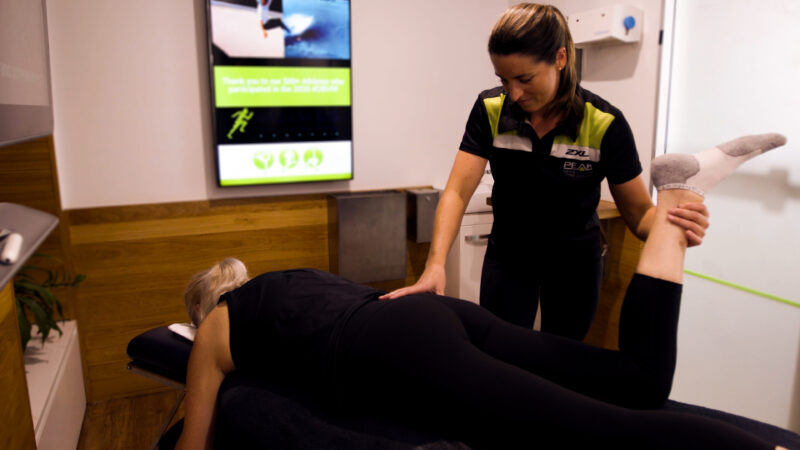
Overview
What is Sciatica Pain?
Sciatica is a form of “neuralgia” or nerve pain, specific of the Sciatic nerve that forms out of multiple nerve roots exiting the lumbar spine to then travel down the back of the leg. The pain is often described as sharp, shooting or burning, localised to the distribution or pathway that the sciatic nerve innervates. It may also be used to refer to other neurological symptoms such as numbness, tingling or pins and needles down the back of the leg and into the foot/ankle.

Different Types Of Sciatica Pain
Due to the fact that Sciatica is irritation of the sciatic nerve which forms in the low back down to the knee then splits to continue down to the foot and ankle, people’s experience of sciatica can vary in location and character. Nerve roots leave at multiple levels of the spine to form the sciatic nerve so depending on what nerve root there is compression can differ where you feel your symptoms. Also the severity of compression/irritation will also be a factor on the severity and location of symptoms.
Sciatica Back Pain
Sciatic back pain is irritation of the nerve roots that leave the spine to go on to form the sciatic nerve. Usually if there is back pain alone the irritation/compression is not enough enough to travel further down the path of the nerve into the leg. Back pain with associated sciatica is often caused by the associated muscle spasming and tension that come hand in hand with the condition causing the sciatica.
Sciatic Hip / Knee / Foot pain
The Sciatic nerve is responsible for relaying messages to and from the brain to specific areas of the hip, knee and lower leg. Depending on the spinal level and severity of compression/irritation people experience sciatic pain at various locations. Some may experience nerve pain in the bottock, some down to the back of their knee and some may experience it travelling all the way to their foot. It is generally a sharp, shooting or burning pain in these locations that occur when the nerve is tensioned usually from bending/flexing at the hips with straight legs.
Sciatica Symptoms
The symptom types of Sciatica vary in character and intensity depending on the severity and location of the compression/irritation. It can often be misdiagnosed for what is actually muscle related pain so having an understanding of the symptoms experienced by the sufferer is important.
Signs of true Sciatica include:
- Sharp / Shooting pain down into the leg
- Burning pain down the back of the leg
- Pins and needles into the leg and/or foot
- Numbness (or Paresthesia) most commonly in the foot/toes
- Muscle tension in low back, glutes or posterior leg
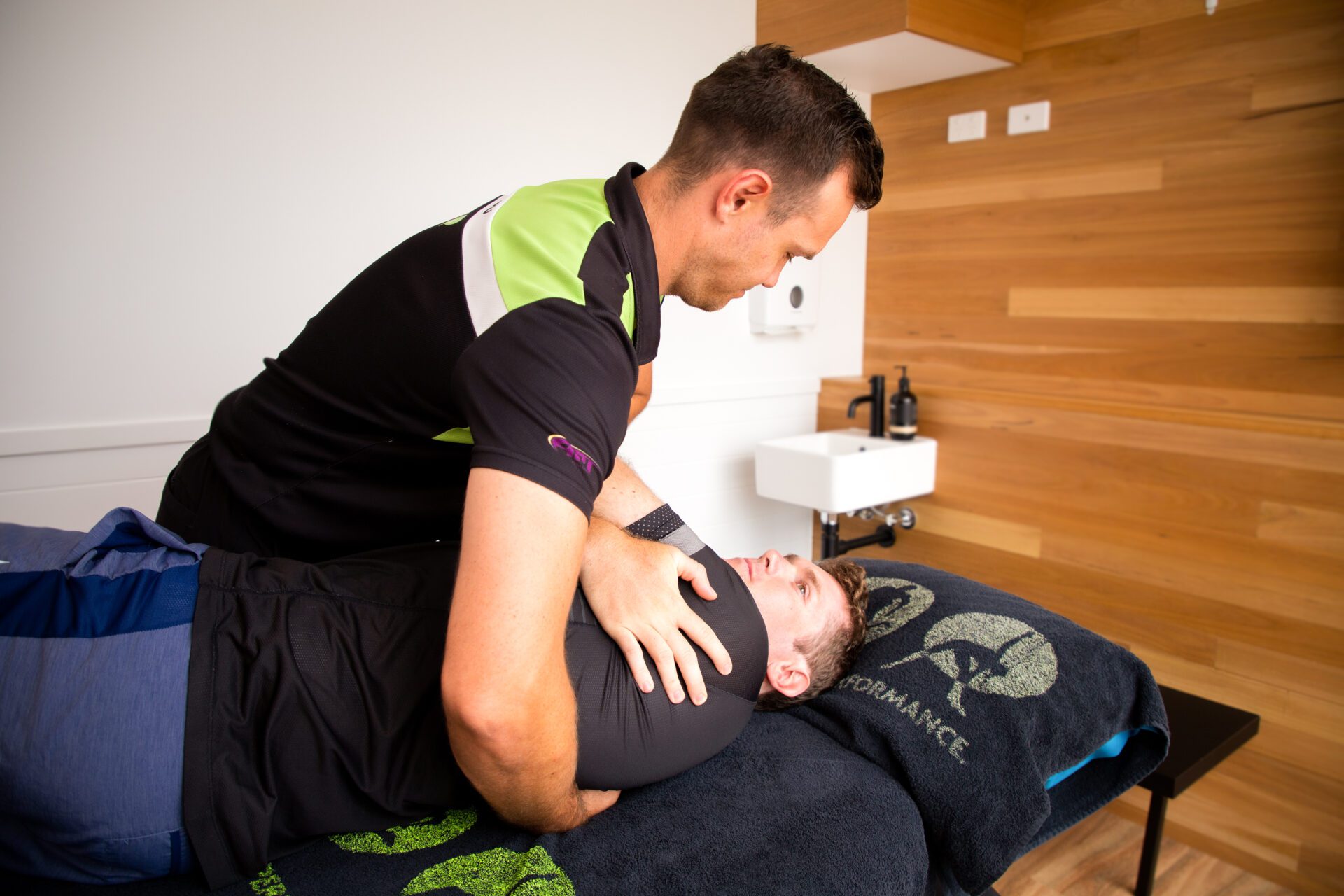
Sciatica Causes
Sciatica is caused by the compression or irritation of the sciatic nerve. Thinking of a nerve as a garden hose, if you were to have a kink or compression of your garden hose you would not get nearly as much water pressure than without the kinks. The same happens with a nerve. If there is a site of compression along a nerve you will get less innervation from the nerve which is the reason you may experience some numbness or pins/needles.
Nerves are also your brain’s way of understanding what you are physically feeling/sensing around your body. Nerves need to be sensitive to be able to tell the brain exactly what your body is feeling. This hypersensitivity is also why when a nerve is irritated it can be highly painful.
Sciatica can occur due a range of different reasons.
- Acute – An acute episode of sciatica can occur due to a specific injury to the back that may be from lifting a heavy object with poor form for example. This type of Sciatica may be from an acute lumbar disc bulge.
- Chronic – chronic or long lasting sciatica is experienced due to a more long-standing condition of the lumbar spine such as degeneration of the disc or spine causing nerve root compression.
Things that can aggravate Sciatica:
- Prolonged sitting
- Inactivity
- Lifting heavy objects with poor techniques
- Pregnancy
- Weight gain

Sciatica Assessment
If you think you are experiencing Sciatica we recommend that you book an appointment with a PEAK Practitioner to help you understand the cause. Often seeing an Allied Health professional such as a Physiotherapist, Chiropractor or Massage Therapist can be a good first step. At PEAK we have all of these Practitioners under one roof. Our Practitioners find that they can usually diagnose sciatica from some relatively simple physical tests. Once they have tested your sciatica and understand the severity of the symptoms they will work with you to decide whether further investigation is needed into the cause of your symptoms. Sciatica is most commonly caused by compression by an intervertebral disc or by degenerative changes in the spine compressing the sciatic nerve. Both of these conditions are in the scope for Physiotherapists, Chiropractors and Massage Therapists to help manage. Your PEAK Practitioner may also suggest a referral for further imaging such as an x-ray, CT or MRI. This may give practitioners a better understanding of what is going on but aren’t always conclusive to why you may be experiencing sciatica.
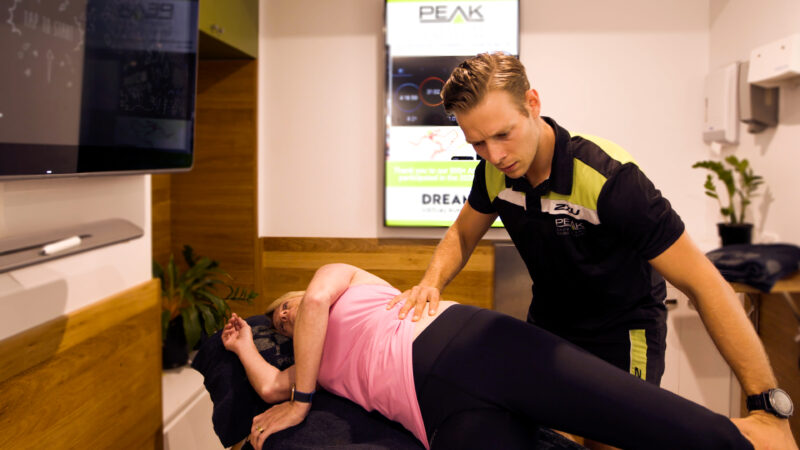
Sciatica Treatment
Massage for Sciatica
Massage can benefit individuals suffering from sciatica as a common associated symptom experienced with sciatica is muscle tension and spasming. Massage can give relief to people suffering from tense or spasming muscles.
Physiotherapy for Sciatica
A Physiotherapist may also provide relief from Sciatica via manual therapy techniques such as massage, dry needling, spinal manipulation and ART (Active Release Technique). On top of manual therapy a physio will also be able to prescribe exercises for sciatic pain.
Chiropractic for Sciatica
Similarly to Physiotherapists, a Chiropractor will look to provide relief of Sciatica via manual therapy techniques as well as tailored exercises for sciatica. Sciatica is a common issue that Chiropractors will see as traditionally they specialise in conditions of the spine and nervous system.
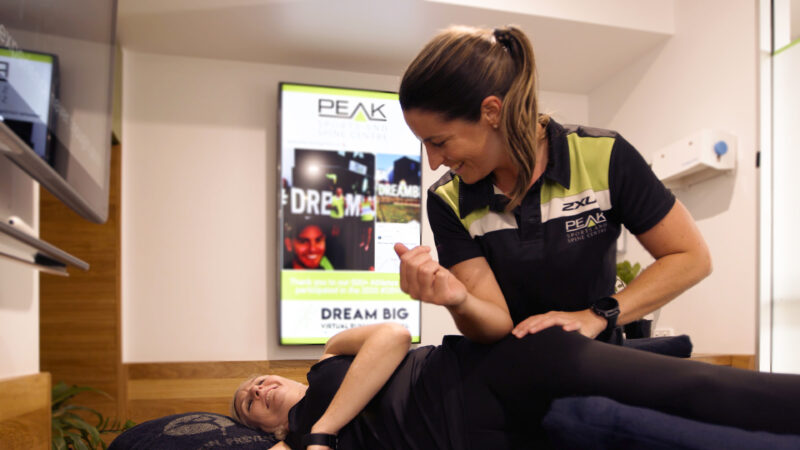
Sciatica During Pregnancy
Sciatica during pregnancies tend to be rare with only 1% of pregnancies experiencing sciatic pain. Often if there is already an underlying condition causing compression of the nerves (disc bulge or arthritic bony spurs), the accentuated spinal curves due to pregnancy can exacerbate symptoms.
Numbness during pregnancy is commonly caused by peripheral swelling caused by increased fluid retention that compresses nerves. Numbness can also be a sign of preeclampsia so it is important that if you are experiencing numbness during pregnancy you get accessed by a health professional.

Meet our Sciatica Pain Treatment practitioners


Brittney Trueman

Michael Dawson

Tia Craig

Tommy Jarrard

Katie Muscat
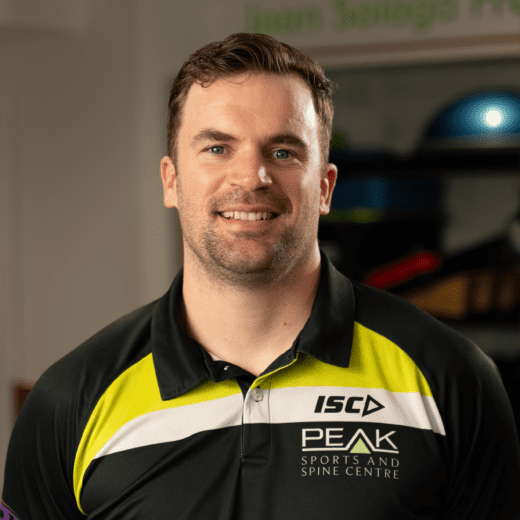
Martin Brennan

Cameron van Betuw
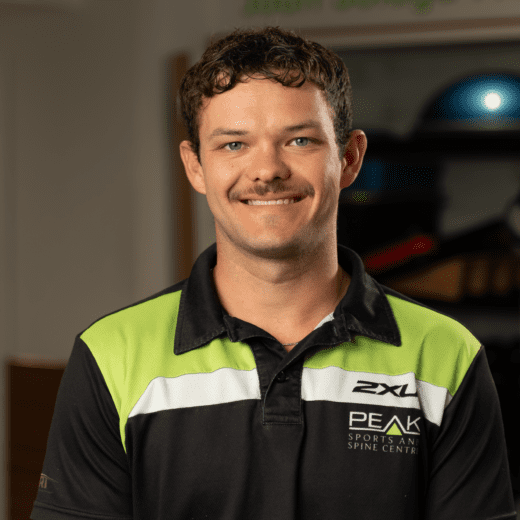
Nathan Denham

Lleyton Revie

Jasmine Kirk
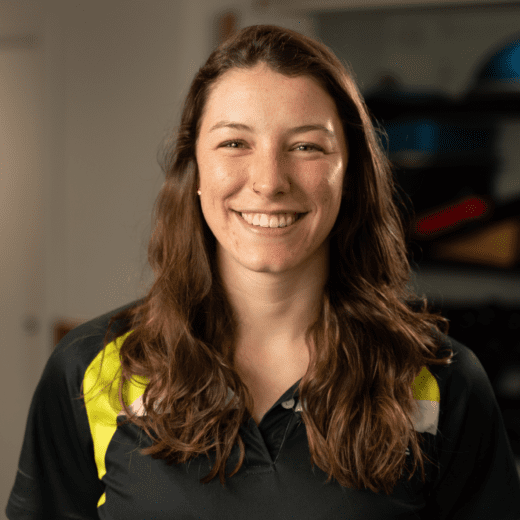
Lelia Weyrich
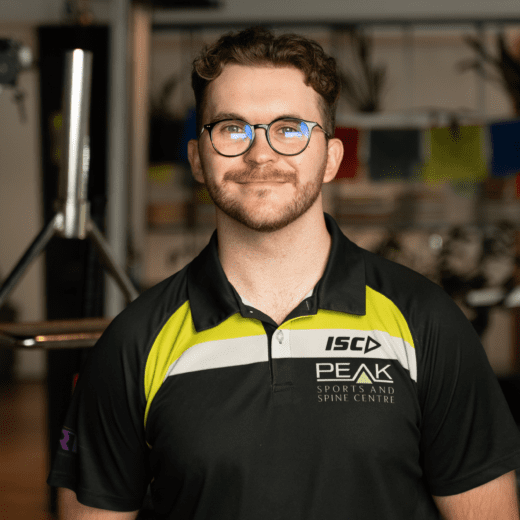
Callum MacDiarmid

Liam Robertson

Sophie Dyer

Emma McDougall

Ryley Porter
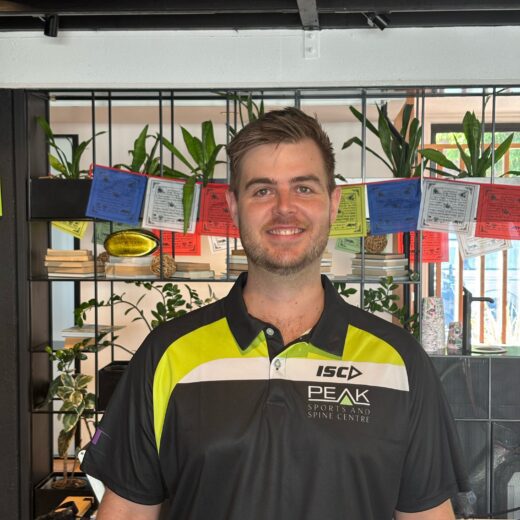
Luke Stephens

Jonathan Craig

Campbell Thomas

Max Sedgwick

Akshay Prakash
FAQs Frequently Asked Questions
This varies from person to person but is commonly described as one or more of the following:
- Sharp / Shooting pain down leg
- Burning sensation in leg
- Pins and needles in leg/foot/ankle
- Numbness in leg/foot/ankle
- Back and/or leg tension
This depends on the severity of the irritation/compression. Generally most episodes of sciatica will last around 4-6 weeks. If the reason for your sciatica is more serious this timeframe may increase.
A timeframe of healing for someone’s Sciatica is dependant on multiple factors:
- The cause of nerve compression/irritation,
- The severity of the compression/irritation
- What you are doing in your day that may be aggravating this
These are all things that your PEAK Practitioner will help determine so that they can help you understand how to reduce your symptoms.
The symptoms of sciatica may increase at night due to the prolonged positions you sleep in. Different sleeping postures may increase or decrease symptoms, this is why it is important to see a health professional to help you best understand how to avoid these aggravating factors.
If you believe you are experiencing sciatica, a safe first step is to come see a PEAK Physiotherapist or Chiropractor who can assist with your diagnosis. They will be able to give you advice and education around your condition and also decide whether you need further investigation from a GP or specialist.
Aggravating factors of Sciatica include:
- Prolonged sitting
- Inactivity
- Lifting heavy objects with poor techniques
- Pregnancy
- Weight gain
This will depend on your specific circumstances. Depending on the severity and acuteness of the condition it may be a load that your body isn’t quite ready for. Your PEAK Practitioner will help determine what is suitable physical activity for you.
Our locations
Hawthorne
PEAK Hawthorne opened in 2012 and was extended and renovated in 2020. You see the same team whether we see you at Hawthorne or one of our other clinics. Hawthorne offers private treatment rooms and a spacious exercise area incorporating the latest equipment and technology, unrestricted single level access and off-street parking. We also provide HICAPS for real-time private health claiming.
Our locations
New Farm
PEAK New Farm opened in August 2019. You see the same team whether we see you at New Farm or one of our other clinics. New Farm offers private treatment rooms and a spacious exercise area incorporating the latest equipment and technology, unrestricted single level access and off-street parking. We also provide HICAPS for real-time private health claiming.
Let's get started — How can we help?
Physiotherapy
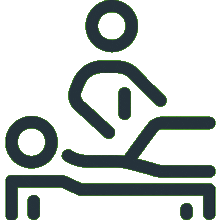
Chiropractic
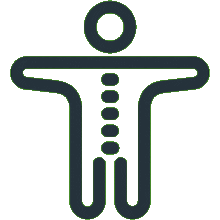
Podiatry
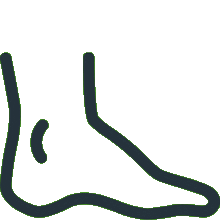
Massage Therapy
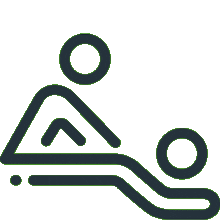
Women's Health Physiotherapy
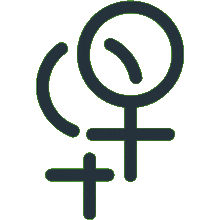
Running Program Tailored To Your Goals
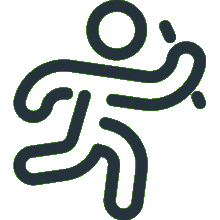
Joint Mobilisation
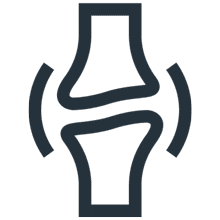
Active Release Technique
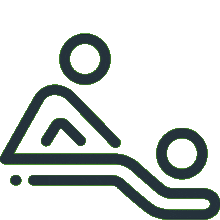
Exercise Prescription
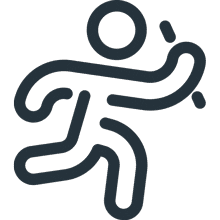
Real Time Ultrasound Imaging

Spinal Manipulation
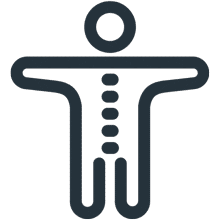
Functional Movement Screen
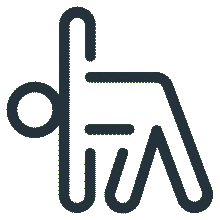
Knee Pain Treatment

Hamstring Strain Treatment
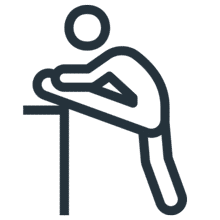
Hip Pain Treatment

Upper, Middle & Lower Back Pain

Neck Pain Treatment

Shoulder Pain & Rotator Cuff Tear

Can't find what you're after?
View all ServicesOr email the PEAK team at info@peakssc.com.au
Hawthorne
- Phone: (07) 3399 3318
- Fax: (07) 3319 6577
Address
5/171 Riding Road,Hawthorne, QLD, 4171 Get Directions
Opening Hours -
6 days per week
- Monday - Friday: 7:00 am - 8:00 pm
- Saturday: 7:00 am - 1:00 pm
To make a booking outside of business hours, please use our form by clicking here.
New Farm
- Phone: (07) 3399 4668
- Fax: (07) 3319 6577
Address
1/15 Lamington Street,New Farm, QLD, 4005 Get Directions
Opening Hours -
6 days per week
- Monday: 7:00 am - 8:00 pm
- Tuesday: 7:00 am - 8:00 pm
- Wednesday: 9:00 am - 8:00 pm
- Thursday: 10:00 am - 8:00 pm
- Friday: 7:00 am - 3:00 pm
- Saturday: 7:00 am - 3:00 pm
To make a booking outside of business hours, please use our form by clicking here.

